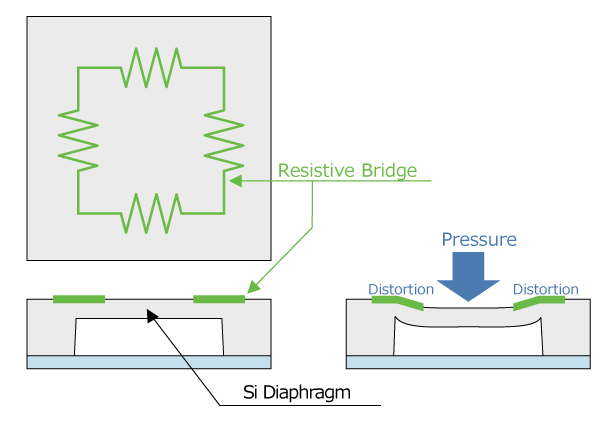<Barometric Pressure Sensor>
What is a barometric pressure sensor?
A barometric pressure sensor is a sensor that detects atmospheric
pressure.
Various types of pressure sensors exist utilizing different
materials and methods as shown below based on the pressure values to
be measured.
Among these, sensors that detect atmospheric pressure are called
barometric pressure sensors.
Pressure Sensors Classified by Materials/Method

A typical example of a barometric pressure sensor is a
piezo-resistive type that uses silicon semiconductor.
ROHM barometric pressure sensors are silicon-based piezo-resistive
types.
Piezo-Resistive Type Barometric Pressure Sensor
Piezo-resistive pressure sensors utilize a single Si crystal plate as a diaphragm and diffuses impurities on its surface to form a resistive bridge circuit, making it possible to calculate pressure (atmospheric) by detecting the resistance change resulting from distortion of this resistive bridge when pressure is applied.
【 Piezo-Resistive Type Barometric Pressure Sensor】

The phenomenon in which the resistivity (electrical conductivity) changes based on the pressure applied to this resistance is called the piezoelectric effect, and ROHM’s barometric pressure sensor is an IC (ASIC*) that combines a piezoresistive pressure-receiving element (diaphragm structure that integrates a piezoresistor utilizing MEMS* technology) with a temperature compensation function, control circuit, and other components in a single package, making it easy to obtain atmospheric pressure information with high accuracy.
(Micro-Electro-Mechanical Systems)
A device that integrates miniaturized machine elements, sensors,
actuators (drive blocks) on a single substrate.
(Application Specific Integrated Circuit)
An integrated circuit that combines multiple circuit functions for a
specific purpose.




